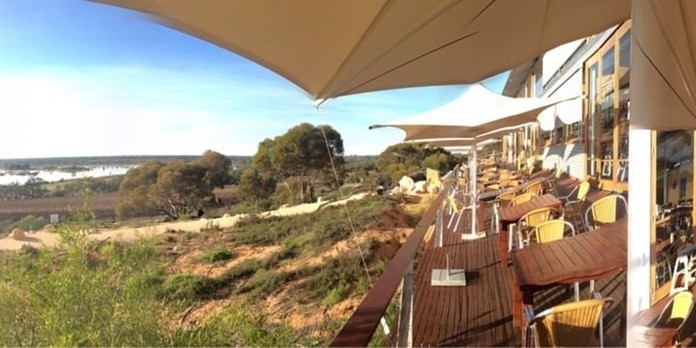
I was in Hungary at the time – Budapest to be exact – staying at a cheap lodging in a rather run-down part of town. It was here, one evening that I had my first taste of classic sweet wine. It was Hungarian Tokay Aszú, the world-famous and somewhat mystical golden wine known throughout the English-speaking world as Tokay (tock-eye).
It was ravishingly sweet. For hundreds of years it was the favourite wine of the wealthy aristocracy of Europe, Russia and Poland. Earlier in the day, I had chanced upon a small wine shop where the enthusiastic owner persuaded me to buy a bottle. In those days I was not used to drinking wine regularly and this unfamiliar yet sumptuous wine turned out to be higher in alcohol than I had expected. Later that night, I found myself effortlessly levitating inside the vast spaciousness of St Stephen’s Basilica in Budapest.
To wine enthusiasts, the mention of sweet wine brings memories of German Eiswein or those two splendid French dessert wines, Sauternes and the rather lesser-known Barsac, both of which come from the Bordeaux region. Because of the high sugar content they age well and have a lovely soft, slightly syrupy texture though they are rarely cloying.
The most famous is Château d’Yquem which is regarded with reverence among wine connoisseurs. Vines have been planted at the château since 1711 and the legendary sweet wines are noted for their concentration and complexity of taste. They are long-lasting wines which can develop in the bottle for over a hundred years and some remarkably old vintages are still available – if you can afford them. You can buy Château d’Yquem in Thailand although a single bottle of the relatively recent 2007 vintage will set you back Bt 55,000. I tend not to drink it very often.
Although sweet wines are usually served only at the end of formal dinners, they can bring an extra dimension to your desserts at home. You’ll probably be pleased to know there are cheaper alternatives to Château d’Yquem. You can buy a decent bottle of Sauternes at more earthly prices and the sumptuous, fruity and honeyed Barton & Guestier Passeport Sauternes is about Bt 1,500 from Wine Now Asia. I’ve also seen the excellent Louis Eschenauer Sauternes in Villa for about Bt 900.
If you’re looking for something even cheaper to liven up your dessert, the Muscat grape can come to your rescue. Surprisingly there are over two hundred different varieties of Muscat (or Moscato) and they have been around for centuries. In more recent years the grape has been grown successfully in Australia.
Banrock Station Moscato 2019 (white), Australia. Bt 550 @ various outlets
The curiously named Banrock Station has acquired something of a reputation for popular fruit-forward wines which are easy on the palate. This one is a straw colour with attractive hints of green. It looks inviting and although the first sniff might possibly remind you of Sprite, more subtle aromas of pomelo and melon soon come through. You’ll probably pick up the distinctive Muscat aroma too.
This is a lively easy-drinker which tickles the tongue with its delicate sprizty quality. There’s a surprisingly long and satisfying finish too; unusual for a wine at this price tag. The wine is only 5.5% ABV which is about the same as our local beer. You can serve dessert wines as cold as you dare. I’d prefer this straight out of the fridge and even then I might give it another twenty minutes in the freezer. In our sultry climate it’ll soon warm up and allow the aromas to emerge. Not only will this work well as a dessert wine, you could also try this light and easy wine as an apéritif.
Deakin Estate Moscato 2014 (white), Australia. Bt 550 @ Wine Connection
This is a really easy drinker and although it comes in the “sweet” class it would be more accurately described as “semi-sweet”. Deakin Estate is a relative newcomer to the Australian wine scene. Although the land was bought in 1967, the company didn’t start producing wine until the 1990s by which time some of the vines had achieved a venerable age. This particular wine has won several prestigious awards including a bronze medal at the UK’s International Wine Challenge.
To my mind, this is a splendid dessert wine if you want to keep the price as low as possible. It’s a pale yellow wine with faint hint of lime on the aroma and the distinctive smell of sweet raisins. And this incidentally is one of the hallmarks of Moscato because as far as I know, it’s the only wine that actually smells of grapes. The taste has a delicate acidity and a slightly spritzy quality which makes it delightful refreshing. At only 6% ABV this wine is remarkably low in alcohol and there’s an attractively long finish too. There are hints of green apples on the palate and this proved a perfect match for my home-made apple pie. I use a recipe from my Scottish grandmother, who in all probability received the recipe from her Scottish grandmother. The apple pie could have even been a favourite of Robert Burns. It would be pleasing to imagine that old Rabbie washed it down with a few glasses of sweet Hungarian Tokay.
 |
 |
 |





